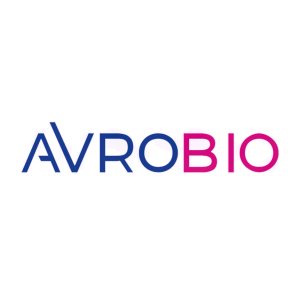AVROBIO Reports New Interim Safety Data Across Investigational Gene Therapies for Fabry and Gaucher Disease Type 1
No adverse events or serious adverse events related to drug product in 14 patients treated in Phase 1 and 2 Fabry disease trials and Phase 1/2 Gaucher disease trial
Post-gene therapy administration safety data out 4½ years for first patient dosed
“We have worked from the very beginning and at every turn to incorporate a strong safety focus in our proprietary plato® gene therapy platform, by having carefully selected clinical indications; an optimized, state-of-the-art vector; closed and automated manufacturing; use of innovative analytics; and a personalized conditioning regimen, to bring lentiviral gene therapies to patients with lysosomal disorders,” said
Fabry disease clinical trial safety data reinforce predictable and generally consistent safety profile
New safety data from the first eight adult patients dosed in the Phase 2 FAB-GT trial and the five adult patients dosed in the investigator-sponsored Phase 1 trial show no adverse events (AEs) or serious adverse events (SAEs) related to drug product AVR-RD-01. The AEs and SAEs experienced by trial participants to date in the two trials have been generally consistent with myeloablative conditioning, protocol-mandated drugs, underlying disease or pre-existing conditions. Of all safety events reported to date,
These safety data are from patients in the FAB-GT study with a mean post-gene therapy follow up of 16 months (range: 2-38 months) and the Phase 1 study with a mean post-gene therapy follow-up of 39 months (range: 29-54 months). Safety data from the ninth patient recently dosed in the FAB-GT study are still being analyzed, but preliminary data are consistent with the overall safety profile.
“Overall, we believe that these data further support the risk-benefit profile of AVROBIO’s investigational gene therapy for Fabry disease. With previously reported durability data out more than three and a half years for the first patient, these new data strengthen the safety profile of this gene therapy,” said
With AVROBIO’s Bu90-Target Concentration Intervention (TCI) conditioning regimen, patients receive four daily doses of the conditioning agent busulfan, each adjusted to target a cumulative area under the curve of 90 mg x hr/L. This targeted dosing is intended to maximize busulfan’s ability to make space in the bone marrow for the genetically modified stem cells to engraft, while minimizing the risk of out-of-range toxicity.
Six of the 14 Fabry disease patients in the trials have been treated using AVROBIO’s proprietary plato® gene therapy platform, which includes a state-of-the-art optimized lentiviral vector, proprietary tag technologies, proprietary analytical techniques and Bu90-TCI. The platform’s industry-leading closed, automated manufacturing platform is designed to bring gene therapy to patients worldwide.
The safety data cut-off date for the Phase 1 trial was
Previously reported efficacy data from the two trials have documented stable and sustained enzyme activity and reductions of
Gaucher disease type 1 clinical data at 12+ months show no unexpected safety events
New safety data from the first patient dosed in the Phase 1/2 Guard1 trial of AVR-RD-02 show no SAEs and no AEs to date related to drug product more than 14 months post-treatment. Reported AEs for this patient, who was treated with investigational AVR-RD-02 incorporating key elements of AVROBIO’s proprietary plato® gene therapy platform, have been consistent with myeloablative conditioning, protocol-mandated drugs, underlying disease and pre-existing conditions. The safety data cut-off date was
A second patient has now been dosed in the trial.
Previously reported efficacy data from the Guard1 clinical trial has shown improvement across biomarkers for the first-treated Gaucher disease patient, as well as platelet and hemoglobin levels maintained in the normal range. Enrollment in the Guard1 trial (NCT04145037) is ongoing, and further details are available on clinicaltrials.gov.
Novel techniques provide insight on safety at DNA level of bone marrow and blood cell types
Standard safety follow-up for ex vivo lentiviral gene therapy patients includes looking at the number and location of transgene insertions broadly across nucleated blood cell populations.
All samples analyzed to date show a stable composition of genetically engineered cell populations in the blood starting six months after gene therapy. The company has seen no evidence of persistent dominant clonal expansion across all patients studied. In addition, when combining this information with data derived from the patients’ own bone marrow, the company detected identical insertion sites between blood cell progenitors and their mature cell progeny.
“Patient safety is at the core of our plato® gene therapy platform and we have developed industry-leading techniques, including being able to monitor at the cellular level the integration site and transcription profiles of our investigational therapies. We believe these data provide a valuable and unique tool to monitor at the DNA level the safety of our investigational therapies within the different bone marrow and blood cell types,” adds MacKay.
About
Our vision is to bring personalized gene therapy to the world. We aim to prevent, halt or reverse disease throughout the body with a single dose of gene therapy designed to drive durable expression of therapeutic protein, even in hard-to-reach tissues and organs including brain, muscle and bone. Our ex vivo lentiviral gene therapy pipeline includes clinical programs in Fabry disease, Gaucher disease type 1 and cystinosis, as well as preclinical programs in Hunter syndrome, Gaucher disease type 3 and Pompe disease.
Forward-Looking Statement
This press release contains forward-looking statements, including statements made pursuant to the safe harbor provisions of the Private Securities Litigation Reform Act of 1995. These statements may be identified by words and phrases such as “aims,” “anticipates,” “believes,” “could,” “designed to,” “estimates,” “expects,” “forecasts,” “goal,” “intends,” “may,” “plans,” “possible,” “potential,” “seeks,” “will,” and variations of these words and phrases or similar expressions that are intended to identify forward-looking statements. These forward-looking statements include, without limitation, statements regarding our business strategy for and the potential therapeutic benefits of our prospective product candidates, the anticipated overall safety profile of our product candidates, the implementation and anticipated benefits of our high-resolution molecular biology monitoring techniques, the design, commencement, enrollment and timing of ongoing or planned clinical trials, clinical trial results, product approvals and regulatory pathways, the timing of patient recruitment and enrollment activities, and product approvals, anticipated benefits of our gene therapy platform including potential impact on our commercialization activities, timing and likelihood of success, and the expected benefits and results of our implementation of the plato® platform in our clinical trials and gene therapy programs, including the use of a personalized busulfan conditioning regimen (Bu90-TCI). Any such statements in this press release that are not statements of historical fact may be deemed to be forward-looking statements. Results in preclinical or early-stage clinical trials may not be indicative of results from later stage or larger scale clinical trials and do not ensure regulatory approval. You should not place undue reliance on these statements, or the scientific data presented.
Any forward-looking statements in this press release are based on AVROBIO’s current expectations, estimates and projections about our industry as well as management’s current beliefs and expectations of future events only as of today and are subject to a number of risks and uncertainties that could cause actual results to differ materially and adversely from those set forth in or implied by such forward-looking statements. These risks and uncertainties include, but are not limited to, the risk that any one or more of AVROBIO’s product candidates will not be successfully developed or commercialized, the risk of cessation or delay of any ongoing or planned clinical trials of
View source version on businesswire.com: https://www.businesswire.com/news/home/20211019005483/en/
Investor Contact:
Westwicke, an
339-970-2843
chris.brinzey@westwicke.com
Media Contact:
Ten
617-999-9620
krodophele@tenbridgecommunications.com
Source:






